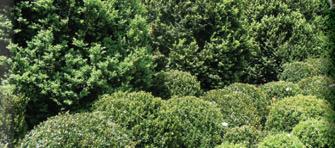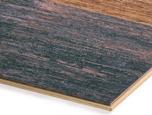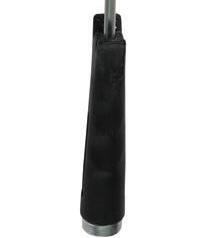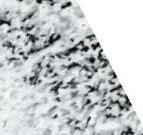
























































 BY SARAH COLBURN STAFF WRITER
BY SARAH COLBURN STAFF WRITER











SARTELL – On a half acre of land, on the soil her late husband was raised, Liz Fiedler grows flowers.


Tens of thousands of flowers are grown at Sunny Mary Meadow near Sartell. Fiedler launched the business in 2020 and caters to 114 subscription-based customers. Customers receive 10 bouquets weekly from July through September.





Fiedler page 4

Fiedler from page 3
It is a business and livelihood for Fiedler that almost was not.






During the coronavirus pandemic, Fiedler, a nurse practitioner, told her husband, Josh, she wanted to spend a few hundred dollars on seeds to nourish a hobby that would make her happy.




Fiedler sowed the seeds and began selling cut flower bouquets out of a stand at the end of her driveway. For every bouquet she sold, she donated one to a nursing home in honor of her grandmother who could not receive visitors.





She donated 201 bouquets,

and the couple gathered 25 subscribers for the following year.
But in December 2020, Josh died of a heart attack while exercising on his lunch break. It was just two days after their daughter Vidalia’s 3rd birthday. The day after Fiedler buried Josh, she found out she was pregnant with their second child, Davie.
Fiedler was at a loss.
In the weeks to follow, Fiedler debated calling the subscribers and returning their money, walking away from the flowers she knew brought people joy. But then, she received an email from one of the owners of Hilltop Health Care Center, a company operating assisted living facilities, asking her to create 200 Easter bouquets for its residents. It created a spark.
At first, Fiedler told the owner she could not possibly make
from page 4
Easter bouquets as she did not have a floral inventory.
“He asked if I could figure it out,” she said.
Fiedler asked existing customers if they had an interest in Easter bouquets and had to cut off orders at 100. Then, she called Daisy A Day Floral & Gift, of St. Joseph, and asked if she could order wholesale through the store. She went on to create 300 bouquets in her heated shop on the farm. Then, with the help of the Hilltop Health Care Center owner and a friend, she hand-delivered each of the 200 bouquets and staffed a day where subscribers could pick up their bouquets from the farm.
“It was one of the first
things that had made me smile or hopeful in months,” Fiedler said. “I just thought, ‘OK, I’m going to do this.’ It gave me a project.”
Fiedler prides herself on creating asymmetrical styles of bouquets with 12 to 15 stems and 10 types of flowers in the same bouquet.
“They’re more whimsical and wildflower looking,” she said.
Fiedler grows 11,000 tulips and has 500 peony bushes. She raises roughly 12,000 zinnias, dahlias, lisianthus, sunflowers, stock, straw flowers and cosmos.
Though Fiedler said she sometimes wonders if people think she is crazy for changing careers and growing flowers since Josh died, she sees potential for the business and has scaled back to one day

“I see it as a way to stay connected to him and have more time with my kids on the weekends.”
- Liz FiedlerPHOTO SUBMITTED Josh Fiedler, Vidalia Fiedler and Liz Fiedler take a family photo during the summer of 2020 just months before Josh died of a heart attack while exercising on his lunch break.
If you are frustrated with a dull nish, stained or cracked grouting, hardto-clean plastic or berglass shower inserts, or dated ceramic tile shower, a cultured marble shower or bathtub surround would be a great alternative and a better choice than a tile shower.









a week working as a nurse practitioner.
“I see it as a way to stay connected to him and have more time with my kids on the weekends,” she said. “It’s more of a passion project.” Fiedler said she is striving to have a deeper connection with her subscription holders.



“They know the work that goes into it, and they appreciate that,” she said. “It’s a different kind of flower than you can typically buy.”
As Fiedler, who is newly engaged to Brent Mergen and is planning an October wedding, looks to the


Sunny Mary Meadow offers a newsletter regarding events at the farm and opportunities for the public. Visit www.sunnymarymeadow.com to sign up.
Liz Fiedler is launching a “Sunny Mary Meadow” podcast with gardening tips as well as speaking on grief and supporting people who are grieving.
Fiedler has e-books available to help others create beautiful flowers. For more information about the books and to download, visit her website.
future, she is adding more flower events to her schedule. She has hosted create-yourown bouquet events at the nostalgic 1888 farm and at local businesses. She does plan to host pick-your-own bouquet dates in her cut flower gardens,
and she offers bouquets for sale on her website. And, though she does not have business hours open to the public at the farm site, it has become popular with photographers who make a
Fiedler page 7
Fiedler from page 6

reservation.

If there is one thing Fiedler said she has learned from the experience, it is this.





“We can’t control the season or timing of things and just have to adjust and be patient,” she said.







– Liz Fiedler recommends beginners to direct sow seeds into a sunny spot in the garden after the last frost. Her top recommendations for seeds include sunflowers, zinnias, cosmos, amaranth, cress and basil.
– These flowers prefer full sunlight, a minimum of eight hours a day. Plant the sunflowers in the far north of the garden so they
do not cast shade on other surrounding flowers.
– Cut flower gardens are not pretty, so Fiedler recommends gardeners who want flowers in the garden throughout the season to plant twice as many seeds so they can leave some stems behind and harvest others. Cosmos and zinnias will produce more blooms the more they are cut. Sunflowers will not rebloom, so Fiedler




recommends planting half the seeds up front and then waiting a few weeks to plant another batch to allow for continuous blooms.
– Fiedler recommends new gardeners start with a soil sample for the best results but said as long as a gardener has black dirt and things are already growing there, it is likely flowers will too.


– Add organic matter to the soil each fall.





































 BY SARAH COLBURN | STAFF WRITER
BY SARAH COLBURN | STAFF WRITER




















While the decluttering trend fights with the trend of maximalist interior design, there are some things that need to go on every homeowner’s spring to-do list.
When it comes to spring cleaning and decluttering, these are some of the top ways to get ready for a new season:




– Start at the bottom: Go through rarely used cupboards and pull out anything that is not used. Clutter can easily get out of control behind cabinet doors. Recycle those plastic container lids that have no container and take






























out the used-once kitchen novelties.
– Hit the pantry: Go through each and every item, pulling out expired foods and foods that have lost their appeal but are still good and could be donated to a local food shelf. Stylish organization boxes are an easy way to group like things together and create a cohesive pantry space where things are simple to find.
Cleaning page 10

from page 9








– Part with the junk: Take a minute to go through kitchen drawers and part with mismatched flatware and accumulated fast-food accoutrements. Hit up the “junk” drawer at the same time and get rid of things that no longer work and things that are building up.
– Reduce the chemicals: Look through home cleaning products and make an active choice to use up what’s there or properly dispose of lesser used items. Products that are nearly empty can take up a lot of space.




– Out with the old: Go through the bathroom cabinets and look for expired personal care products, including makeup; yes, makeup has a shelf life.







– Eliminate the excess: Linen closets can quickly bulge with extra towels and sheets. Do not hang onto bedding that no longer goes with the mattresses in the home. Instead, find a place to donate and put to good use.
– Keep the most loved: Closets can become an overwhelming bundle of various sizes and clothes that looked good once but are no longer worn. Go through and pull out things that are not being worn to make space for the pieces that are loved. Pairing down the closet is freeing and

makes it easier to get ready for the day using only pieces that fit well and look great.
– Clear the dust: Get out a vacuum attachment and hit the walls and ceiling, cleaning them of accumulated dust and cobwebs.













– Fix the fans: Grab a pillowcase and run it over each blade of interior fans. The pillowcase will catch any built-up dust and then the blades can be wiped clean with a damp rag.














– Clear view: Clean the insides and outsides of the windows and doors, paying special attention to the tracks that can fill with debris and dead bugs.













– Freshen the air: Clean the carpets, rugs and upholstery. Not only will they look fresh, a good cleaning will reduce allergens and built-up oils and bacteria.





– Scour it: Take some time to give those showers, bathtubs and sinks a deep clean. Use a scouring agent if necessary. Also take some time to get the glass back to its original see-through condition.





– Wash it up: Go through each bedroom and take the time to wash the pillows and comforters. Freshening the bedding freshens the whole room.





– Keep it clean: Change the furnace filter as the winter season comes to an end. Filters should be changed regularly according to manufacturer’s directions.


















The Parker family can often be found outdoors enjoying everything from dirt bikes, four-wheelers and snowmobiles to sledding, horseback riding, hiking, fishing, hunting and gardening.
Kimberly Parker, her husband Josh and their six children –Maximus, Rayna, Jacob, Greta, Heidi and Elias – live on 101 acres south of Glenwood. Kimberly home-schools the kids, and though she does not schedule time for physical education, she said it comes naturally each

and every day.
“That’s just our way of life,” Kimberly said. “The kids get out and burn off en-
ergy. We all know the benefits of fresh air; they go out and use their imaginations for the most part.”



The kids spend a lot of time in nature. The couple has wooded acres filled with trails for enjoying the various seasons.
Kimberly grew up
on a dairy farm, and her husband grew up in agriculture too.
“We saw the beauty and the peace in raising a family in the country,” she said. The couple, both from central Minnesota, moved to their land from Colorado in June 2022 to be

closer to family. They did custom harvesting and farmed a portion of their land, growing corn and soybeans, but recently stepped away from custom work. They continue to farm 40 acres and

Parkers page 13

from page 12



are doing work on semitruck engines.
During the spring and summer, the kids and Kimberly focus on their garden, which this year will be 20 feet by 100 feet. The garden contains everything from green beans, broccoli, cauliflower and corn to potatoes, squash and gourds.
“I avoid going to the store as much as a I can,” Kimberly said. “You know what you have when you grow it yourself.”

When they are spending time with the kids, Kimberly said they work to be present. That does not mean they are providing fun at all hours but
rather learning skills, playing with food as they create a meal together, working in the garden or caring for the horses.
The family’s home-school schedule allows for flexibility to take winter trips to the mountains to snowmobile though



that is on hiatus this year as they welcomed a newborn. And, while Kimberly leads the school work, Josh is equal-
ly involved with the kids and can often be found chopping wood and keeping the dirt bikes going or helping on the trampoline.


Kimberly said the kids bounce between activities and will start in the garden and grow tiresome or make such a big pit of mud they move onto something else.
“Do we have good quality, intentional time every day that’s planned out?” Kimberly said. “No, but it just happens.” The family likes to catch and eat fish. Josh and the kids also hunt deer and are talking about turkeys as well. They have a heated deer stand so the kids can tag along;
Parkers page 14
from page 13





the oldest now hunts too.

The family uses fish and wild game as meat sources, but their focus is more on consuming fruits and vegetables. They have three aeroponic tower gardens that they fill with lettuce, kale and herbs year-round. They do not purchase those items from a store unless one of the towers runs out of water and the plants die.




“Fruits and vegetables are very healing,” Kimberly said.


Kimberly is a former personal trainer with a nutritional background and has more than 1,200 followers on her Instagram account.
As Kimberly grows the outdoor garden this spring, her goal will be to grow












enough food to preserve fruits and vegetables for the year. So far, with a smaller garden
last year, she was able to cut down on store produce by almost half.
To keep the kids
excited about produce, Kimberly makes snack
Parkers page 15





boards for them, grabbing a cutting board and chopping up vegetables to serve with hummus and serving peanut butter with apples.

“Kids like food to be fun,” she said.
They also craft many soups in their house. One of their favorites is a creamy broccoli soup with carrots and potatoes creamed together with cashews and chopped, cooked broccoli. Kimberly said the soups allow her kids to consume all the nutrients from the vegetables.




Whether it is riding dirt bikes through the woods or tending to the land, Kimberly said her family is content.





“You can have a lot of kids and not lose your mind,” she said. “I share the beauty of a big family and eating a wholesome diet and having fun in the country. … (The idea) that life can be simple.”

































 BY SARAH COLBURN | STAFF WRITER
BY SARAH COLBURN | STAFF WRITER








AVON – As winter melts to spring, low maintenance plants and shrubs with heartier bloom options are hitting the market.


Plant trends come and go, but Paul Huls, of Huls Horticultural Services LLC of Avon, said colorful, thoughtful plantings never go out of style.






“Hostas and daylilies don’t have nearly the popularity they used to,” he said. “People are moving away from some of those traditional plants a little bit. We tend to go in streaks, and we like things that are new and unique.”
Huls page




























H: 320-352-3390
C: 320-293-9087

“There’s a lot more pressure on the system, and it’s harder to get product,” he said.
As people built patios and invested more into their homes, Huls said they aimed to soften their landscapes. “Rather than having a fence that’s harsh and artifi people want that nicer look and a little bit of a softer feel,” he said.
With an increased focus on outdoor living spaces, Huls said there has been a push for container gardens and plantings that are moveable and add focal points in a landscape.


“You can do a variety of pots, and you see a lot of different colored containers,” he said. “Containers can soften
all those hard edges and sort of bring the garden onto the patio, and they don’t take a
Huls page 23










from page 20
lot of maintenance.”
Huls said container gardening is popular because it does not require a lot of money and the choices are endless.
Huls likes to move containers onto patio areas and seating areas to bring color closer in for people to enjoy. Using a variety of pots of various sizes can create a layered look.
Then, as the seasons continue, Huls said different plants can be added for fall and winter to create year-round interest. A good landscape will look good year-round through the use of shrubs, trees, grasses and blooms with staying power.
With pots, Huls said there is less maintenance because there is no weeding and they do not get in the way of mowing.
Each year, Huls said he provides more container gardens for clients.
“There’s a lot of flexibility as to what you can have in them,” he said.
Some flowers can provide fragrance in a space, and others, like coleus, can provide a large, spectacular look in an arrangement, Huls said.



Huls recommends considering the desired color scheme of a container arrangement.
“Use a color that offsets the house, something to offset that entry way so your eye is drawn right to it,” he said. “It’s more aesthetics than anything.”
Huls works to develop a theme and goes from there.
“I like to have a basic theme there to keep everything cohesive, and it makes it look a lot more structured and less chaotic,” he said.
Huls recommends choosing three colors and building within that palette from a va-
riety of plants.
The standard advice for building a pot is to incorporate a bigger, taller focal point, a mid-height filler and a trailing spiller to soften the edge of the pot. Smaller containers can be home to a single plant or a variety of plants that are all the same color but different textures. Grouping those down the front or deck steps can create atmosphere, Huls said. “It’s a nice way to dress up an area,” he said. No matter what color or type of flower is used, Huls said the most important thing is placement. To conceal something in the yard while it sits right out in the open, consider placing a pop of color a few feet away from the eyesore to draw the eye there and mentally skip over less desirable areas of the yard.
“Figure out where the eye should be drawn,” he said. “You have to think about how their eye is going to follow the landscape.”
The domed style is strong enough to keep out snow, debris and critters, yet easy to remove for safe escape!

Three widths to fit your egress well: 42” 50” 67” 36” Projection
See more at polybuiltinc.com or find them in stock at Bonanza Valley Lumber in Brooten, MN
320.291.3532


Lori Arends wanted to gut the bathroom of her 1970s home in Sauk Centre, but thanks to some Pinterest tutorials, she refinished the room instead.

“That good ol’ Pinterest just sucks you in,” Arends said.



Arends said her original bathroom was dark and dingy. She stumbled across tutorials to paint the taupe tile





tub surround.
“I wanted to do it without spending a lot of money,” she said.
Arends budgeted $250 and started by painting the ceiling and walls in the bathroom as she researched the best methods for painting tile. She opted to use a process that includes exterior porch cement.

It took her a month to complete the transformation, working on it every weekend and anytime she had two or three hours to spare.
added simple touches to her finished bathroom to keep the look fresh and clean.
Lori
The first step was to sand and clean the tile.
Arends page 25
Arends began by cleaning the grout with a wire brush. Then, she used a hand sander to sand the shine off the tile. Once the finish was removed, Arends vacuumed the tiles, wiped them down with dish soap and water, and then used a stripper agent to remove all the grime. She did the vacuuming and washing process twice, waiting three or four hours between cleanings to be sure the tile was completely dry.




Next, Arends primed all the tiles, letting them dry at least 24 hours. Then, she painted the tiles with porch cement paint from Benjamin

Arends page 26












from page 25





Moore. She painted the tub surround a bright white and the floor a deep blue. Then came the part Arends was most excited about and most nervous about – adding the stencil.


“I wanted something with clean lines,” she said. “When I look at it, I see kind of a vintage look to the bathroom. That’s what I wanted, something kind of clean and crisp.”
Arends began in the corners and carefully worked her way to the door, adding white porch cement paint to the floor with a small brush roller. She took her time, making sure each of the sten-





















cils she put down had completely dried before she removed the overlay. She purchased eight stencils so she could do eight sections of tile at a time. She had to cut some of the stencils near the end to be sure they would fit into some of the spots of cut tile.
Arends page 27





























































































































A living wall is a great way to cozy up an outdoor living space or provide a focal point against a blank fence, shed or garage wall. The walls can be used indoors to create a living focal point that purifies the air.
While there is no limit when it comes to the size of a living wall, there are a few things to consider as you add this bit of lush green growth to an area.

– For the outdoors, consider the weight of the soil and full-grown plants when choosing an area for a living wall project. Walls can hang from a shed,


the back of a garage, a fence or off a deck railing or post. Just be sure the location for the wall is sturdy enough and that there is room for drainage in case any water or soil spills out.







– There are a variety of modular living wall systems ready and available for consumers to purchase. Vertical and horizontal systems are available to fit any space. Additionally, pocket wall systems are available as well as hydroponic systems. Deciding which system



is the best fit can depend on budget and ease of assembly. Some systems are self-watering.













– Decide on the focus of the living wall. Walls can be filled with greens, flowers, herbs or vegetables. Some plants should not be grown with food so pay special attention when choosing plants. Some systems offer separate

Living wall page 32





containers for each plant, which are moveable, allowing different plants to receive more direct sunlight or shade at different times of the year. These systems can be a good fit for growing a combination of plants.
– Choose plants for the system based on its location. Refer to a plant’s care tag to ensure the plant will do well given the soil conditions and amount of sunlight shining on the living wall. Succulents and other drier plants will do best in hot, sunny conditions. Other plants may prefer a mix of sun and dappled sun while others need shade.
– Plants with shallow root systems do best inside living walls because their growth is restricted to the size of the container. It’s also important to look for low-maintenance plants that
are disease resistant because they will grow in dense conditions.
– Choose plants with a variety of colors and textures and remember to consider the plant’s mature size. As plants grow and hang down, some will shade the lower plants. Repeating the same plant throughout the wall can provide a uniformity and cohesiveness to the living wall
even when incorporating a variety of plants.
– When placing a living wall indoors, be sure to opt for a system that provides a waterproof membrane to protect the walls as well as a catch basin to protect the floors. Be sure to choose plants with all the same growing requirements when it comes to light and water. Most indoor living walls
will be in indirect sunlight so choose plants with low-light requirements for the best outcome.
– Indoor and outdoor living walls can be equipped with water systems to provide a low-maintenance option that keeps the wall growing. Additionally, many plants will require fertilizer a few times a year to maintain growth.


We are thrilled to introduce ourselves: Uphus Sod & Landscaping, previously Spaeth Sod & Landscaping, is in business and prepared to service all your needs. We are a family owned business with a combined 20+ years of experience in customer service. We are confident that you will find the same high quality products and service you have experienced in the past. We look forward to serving you!




































































































“Flooring definitely plays a crucial part of the home design; that’s where you can show your home décor style,” said Holly Borgerding, a sales consultant and Borgerding page 39








































from page 36















designer with Hennen Floor Covering of Freeport.
Borgerding said there is an increase in customers searching for durability and flooring that is easy to care for and affordable.









“Right now, luxury vinyl plank is the most popular thing in this particular area,” she said.






Wider planks in a lighter color exude a modern aesthetic and makes the space feel larger and more open. Borgerding said narrow planks look more traditional, and those with pitting and saw marks tend toward the rustic.
As Borgerding works with homeowners planning for a remodel and people coming in to choose flooring for new construction homes, she said there is popularity in all styles of vinyl.


“The look has definitely come a long way,” she said. “The look is a little more realistic and makes it look like real wood.” The planking has texture in it as well as color variation.
“It looks more highend,” Borgerding said. Additionally, Borgerding said the wood-like flooring choices allow homeowners to mix up the look of a room with a colorful throw

rugs or carpet remnants. The store does fashion remnants into rugs for customers at their request and can finish
Borgerding page 40

Borgerding from page 39
off the edges.

In general, Borgerding said there is an interest in natural earth tone flooring and lighter woods in the gray, tan or taupe families.

When it comes to flair and pops of color, Borgerding said those are often reserved for rugs and for the flooring in smaller spaces like a laundry room or bathroom. There, people are trending toward encaustic tile.
“It’s just a space where you can do something fun and show your personality a little bit more,” Borgerding said.
There are a myriad of tiling options and color choices that provide a bold look, Borgerding said.

Though customers are definitely trending more toward hard surfaces, Borgerding said some are opting for carpet to create cozy spaces. The most popular carpets are those that are shorter with a little texture or pattern to them. Borgerding said those not only add a design element to the space but also hold up well.



No matter the space or the style, Borgerding said customers are looking for ease of use.



“People live such busy lives with their kids’ activities and stuff they’re involved in, they want something that’s maintenance free and something that’s pretty easy to take care of,” she said.
























































































 BY SARAH COLBURN STAFF WRITER
BY SARAH COLBURN STAFF WRITER




Dark, saturated colors can provide a feeling of luxury and bring a brooding ambiance to a space.
Knowing how to balance those dark colors with accessories and furniture is an art that can be broken down into steps.

– Think about the finish of the paint and the amount of light coming into the room. An eggshell or satin finish can help provide a reflective quality in the space.


– Dark colors recede and trick the eye, softening the








edges of the room and creating a cozy feel.
– Contrast dark walls with a lighter flooring choice, such as a large, light-colored area rug. A lighter floor will help ground the room and keep it from feeling too heavy.
– Ceilings can be kept light, but in large, cavernous rooms, the dark color can be wrapped on the walls into the ceiling to the entire space together.
– Repeating the wall color on the trim will heighten the room and further blur the line between the wall and the flooring.


– Bring in light. In addition to overhead light fixtures, be sure to consider table lamps and wall sconces to add layered lighting and depth to the room. Multiple points of light can do wonders for a room and provide not only interest but layers of warmth. Picture frame lights can add another element of sophistication to a space.
– Dark walls provide a great backdrop for warmtoned woods and bring out the richness of the wood grain. Don’t be afraid to repeat these same warm and spicy tones in accessories and artwork for the room.
– Pops of metallic décor can elevate the space and provide an additional reflective quality as can glass accents. Creating reflective spaces throughout the room encourages the eye to take in the whole space. Consider vases, cloches, artwork, metallic shapes and metallic knobs on furniture to add interest.
– Choose furniture, accessories and artwork that stand out from the wall color. Grays and whites contrast well with deep wall colors.

– Consider adding a pop of bold color with an accent







Colors page 45



from page 44





























chair or two. Bright colors can provide interest and a sense of flair. Bright colors with patterns can incorporate the dark color on the wall.


– An accent color can be sprinkled throughout the room using throw blankets, pillows and accessories that bring the space to life. Adding the wall color into some of the pieces can create a back and forth between the walls and the accessories to create a cohesive look.
– When choosing accessories, be sure to consider the texture. Adding varied textures to a room can raise its sophistication factor. Texture can come into a space through curtains, planters, trays and fabric choices.








Getting a soil test for your garden is a great way to determine soil health. A soil test will reveal the pH level and, therefore, influence what plants and fertilizers are best for your garden.


The pH level should be between 6 and 6.5. If the soil is out of this range, it can adversely affect plant health. Some plants do like a higher or lower pH level as well. Research on plant health will show what pH level is best for the plants in your garden.



Knowing this information can assist in establishing which fertilizer is best suited for your garden needs.


























